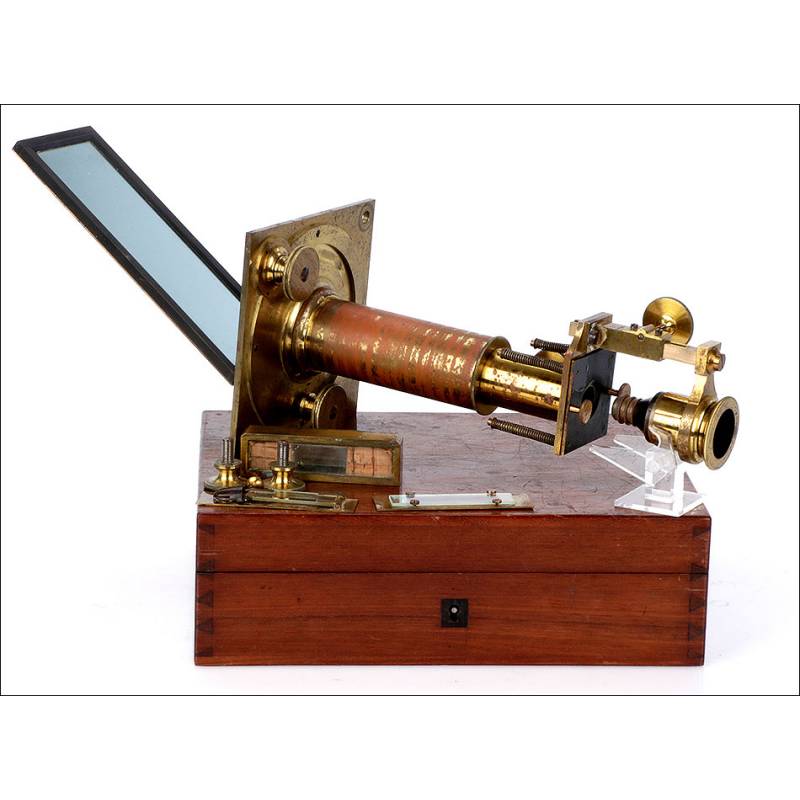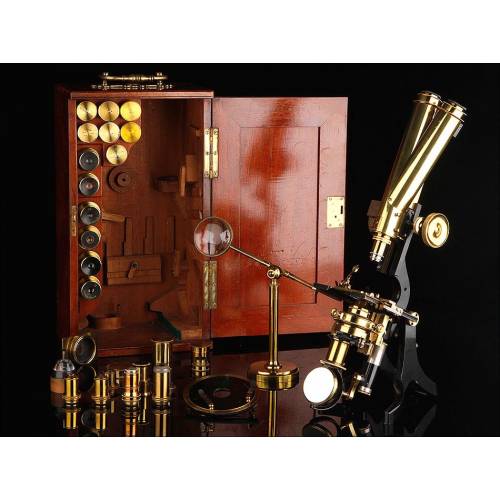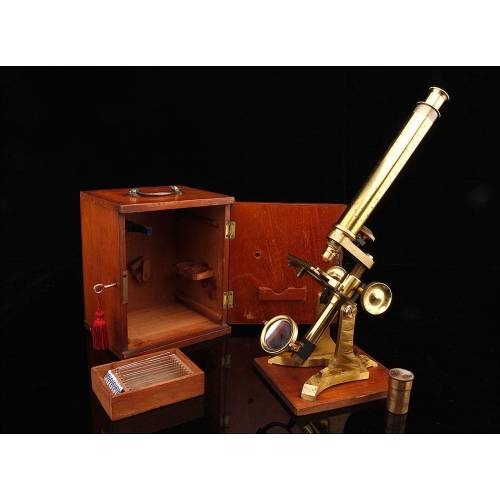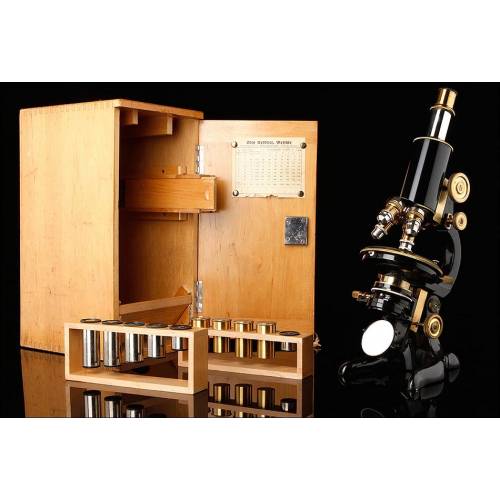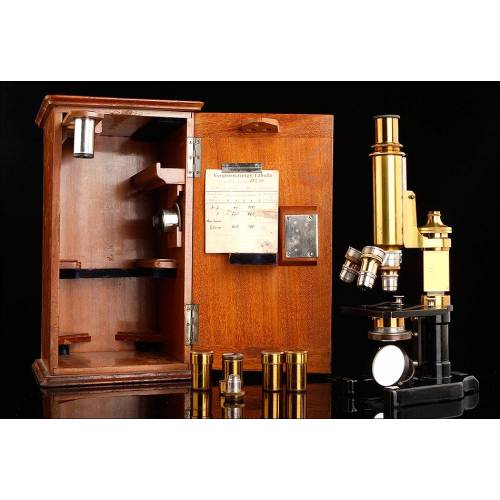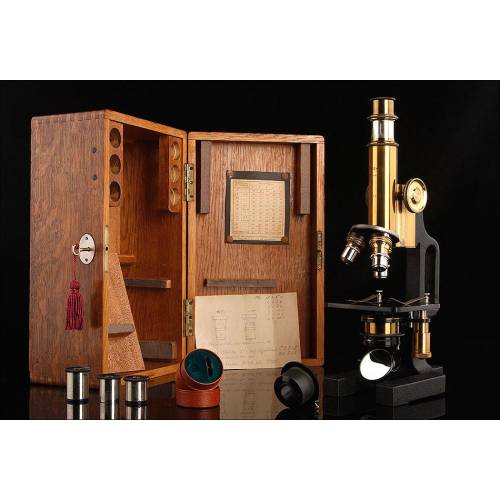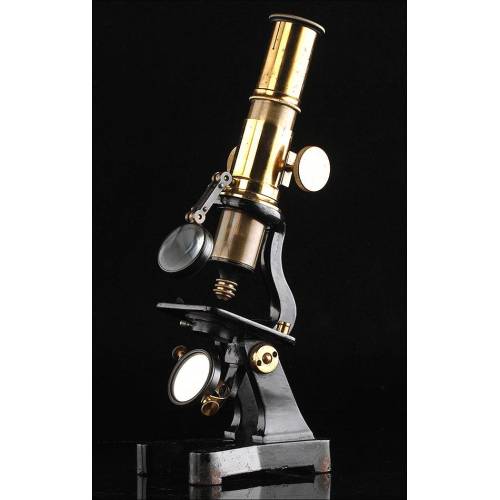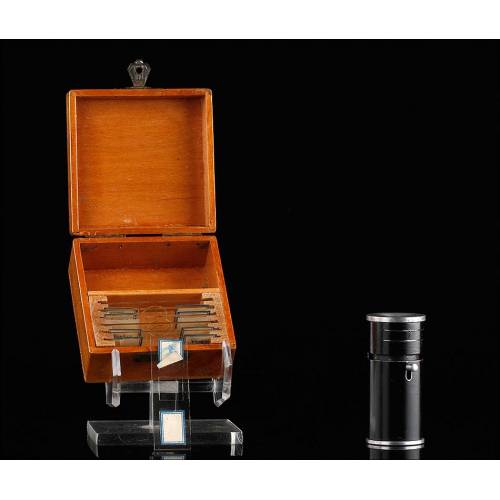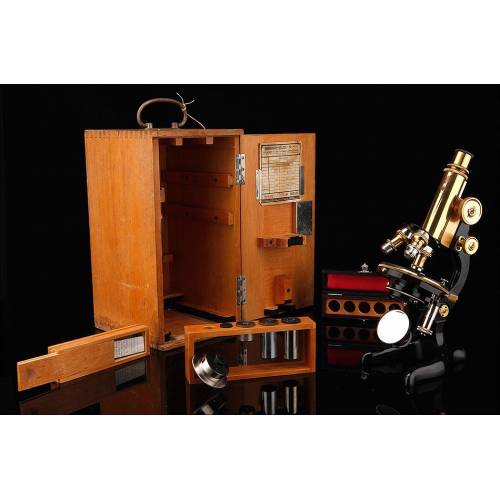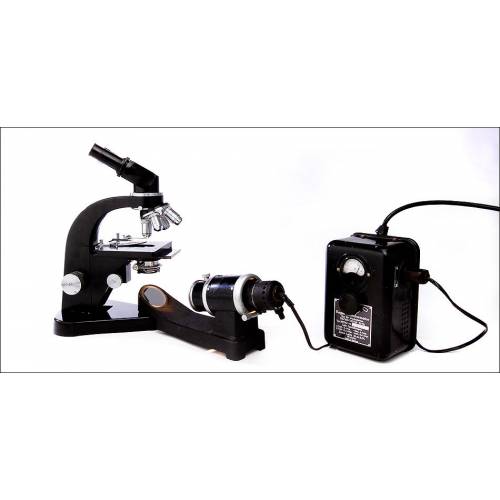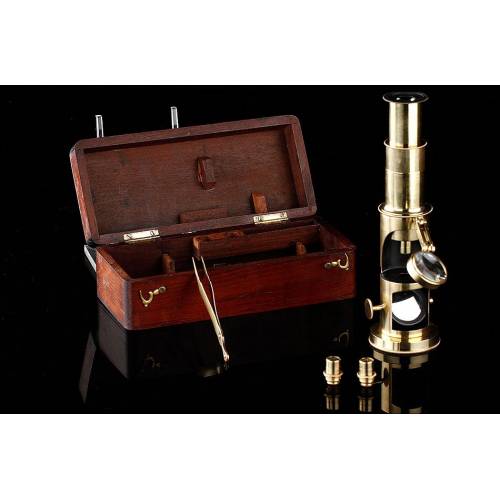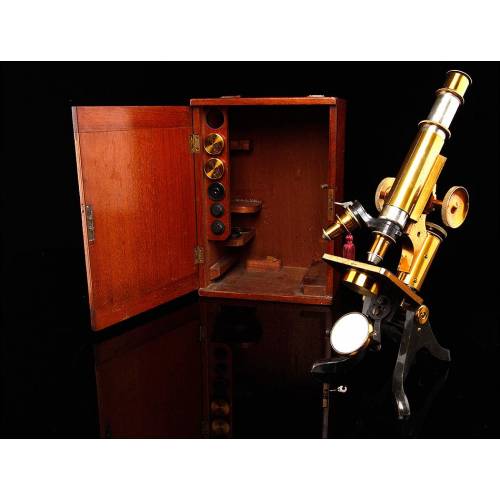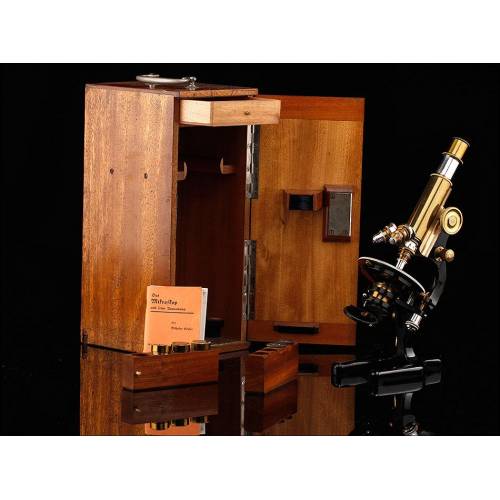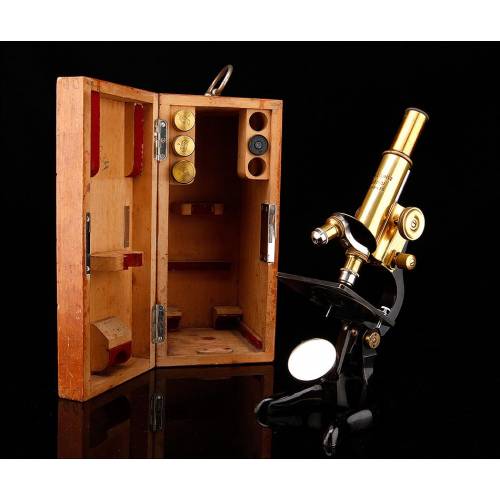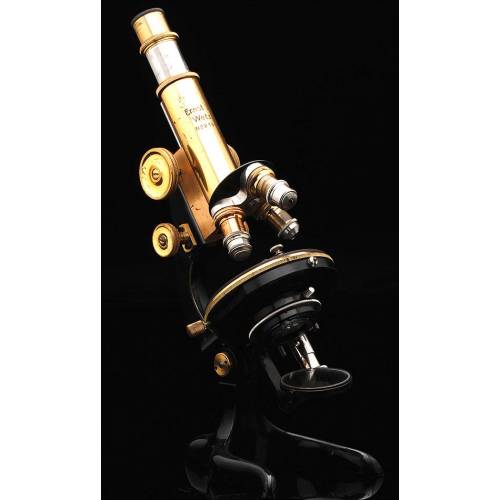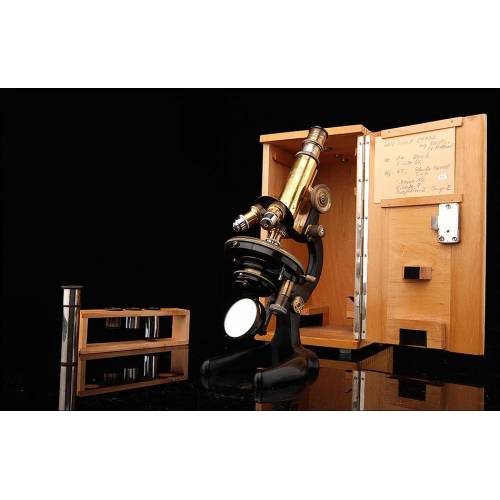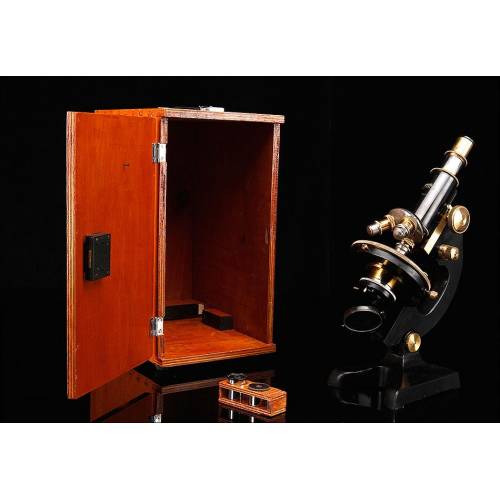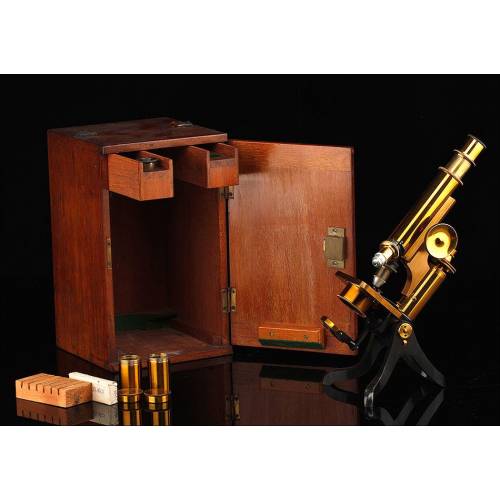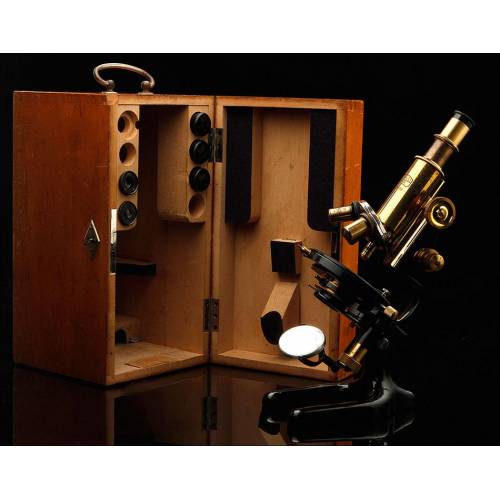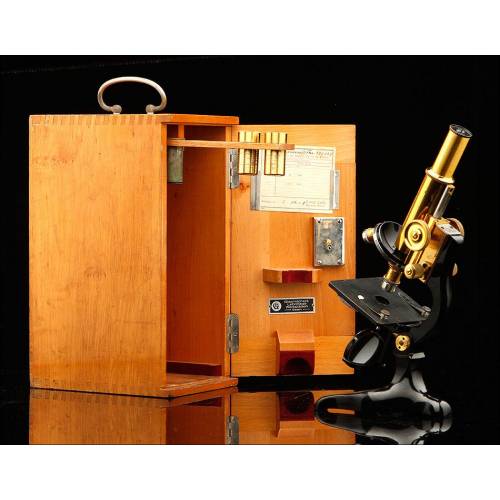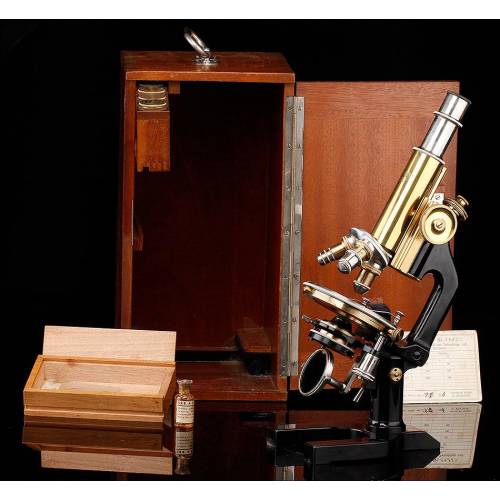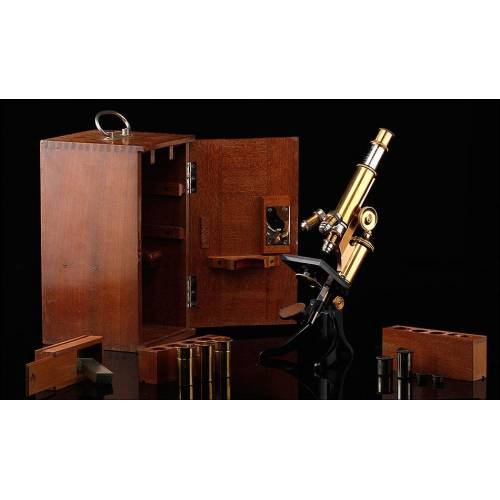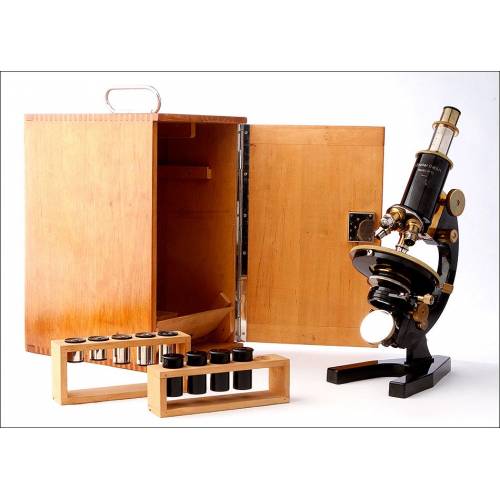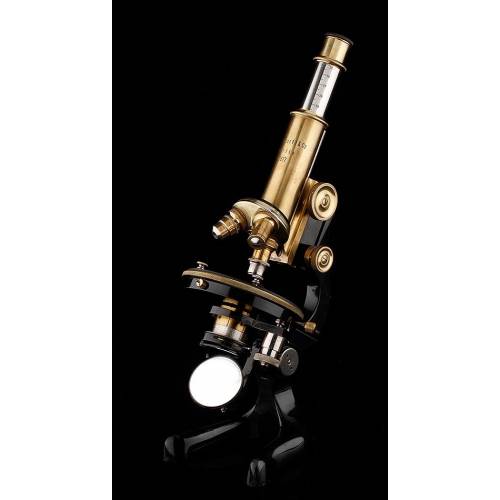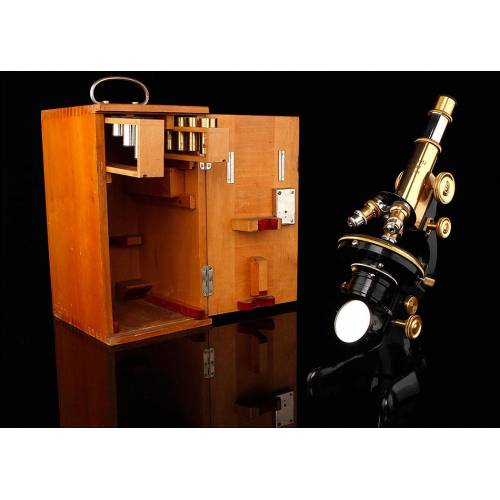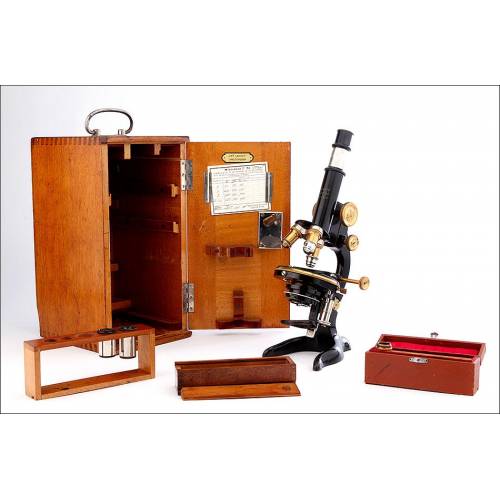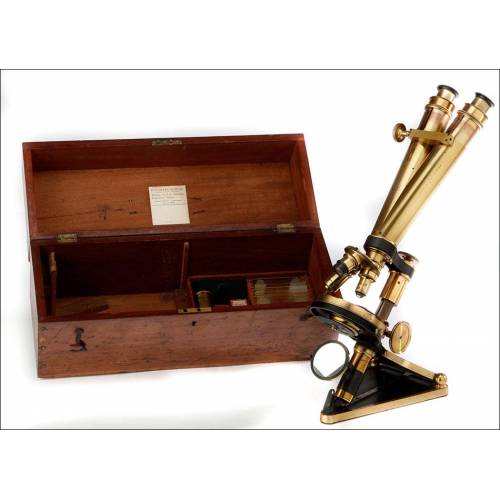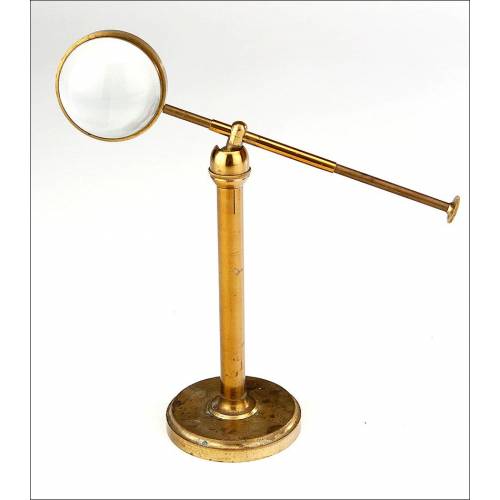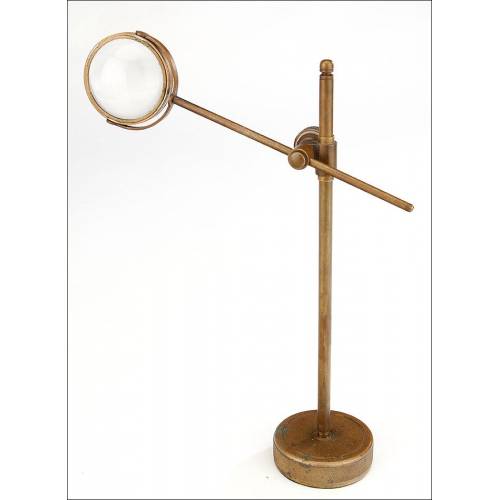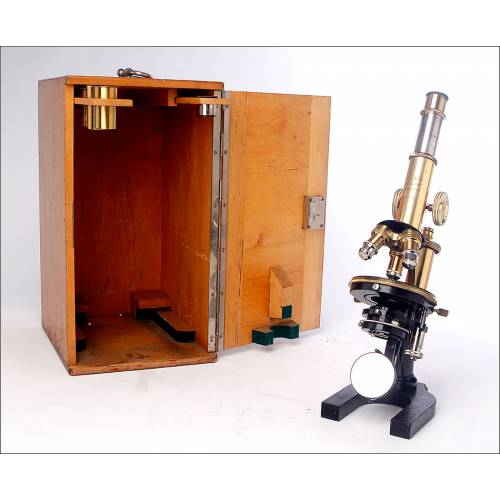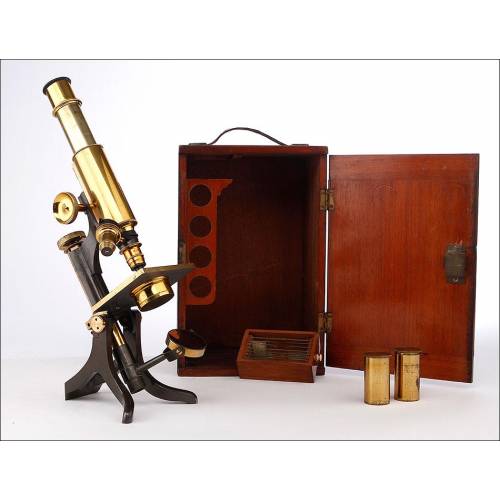C-404
Super Rare Antique Solar Microscope. 1820-1850
Wonderful and very rare solar microscope from the middle of the 19th century. With its mahogany case and working perfectly.
Sold!
This striking device is a rare solar microscope made between 1820 and 1850, in very good working condition. The microscope, an exceptional piece worthy of a science museum, preserves all its original component parts and pieces; they are all well preserved. It comes in its original solid-mahogany wooden case, also in good condition. It is made of brass and keeps the original lacquered finish that provides it with a fine antique patina. The solar microscope comes with some accessories for its use: two sample plates where the samples can be put in order to be projected, a live box (a glass and brass box to watch live specimens) and two adjustment screws. This instrument is quite easy to use. It is similar to the magic lanterns that aroused passions between the 18th and 20th centuries. The mirror located at the back of the microscope is designed to reflect the sunlight and lead it to the lens. The sample plate, located in front of the lens, received this light, then, the shape was projected on the wall, into a dark room. Today we can use this wonderful microscope with the aid of a simple LED light. The mahogany wooden case remains in very good condition; inside it mounts a series of wooden pieces that divide the space in compartments to store the microscope and the accessories in perfect order. Fascinating and fully functional, this rare solar microscope will delight every collector of curious scientific instruments manufactured than one hundred years ago. Measurements: Width: 10.63 in / 27 cm. Height: 3.12 in / 13 cm. Mirrors Height: 10.63 in 7 19.5 cm.Solar Microscope History Solar microscopes were invented in the 18th century. They are an evolution of the device known as camera obscura or magic lantern. These devices use light to project images printed o reproduced on transparent plates, just like current slides do. In the beginning solar microscope were very popular in fairs and exhibitions, where the people bought tickets to see the astonishing images of tiny insects or organisms, several times their size. The name solar comes from the use of natural light to project the images as there was no electric light in those times. In order to see the projections, the microscope had to be located in a dark room with the light coming from the outside. With the trace of time these instruments evolved, but the main innovation was performed by the famous scientist Gabriel Fahrenheit who included a mirror that would catch the light and focus it in the samples. Today we can still use these instruments with the aid of a simple LED light.

